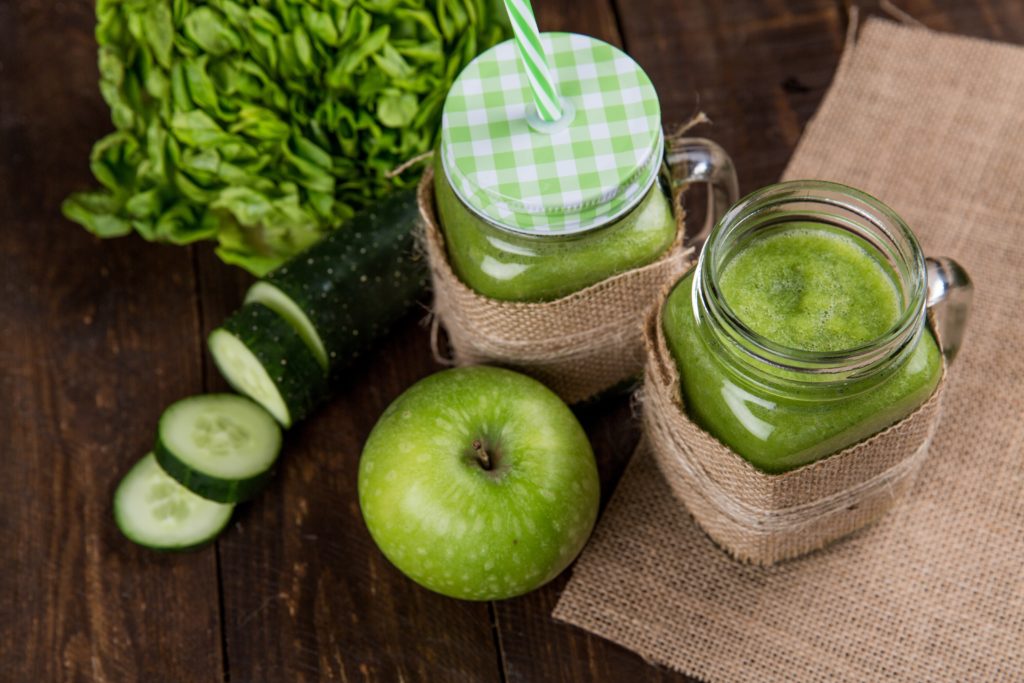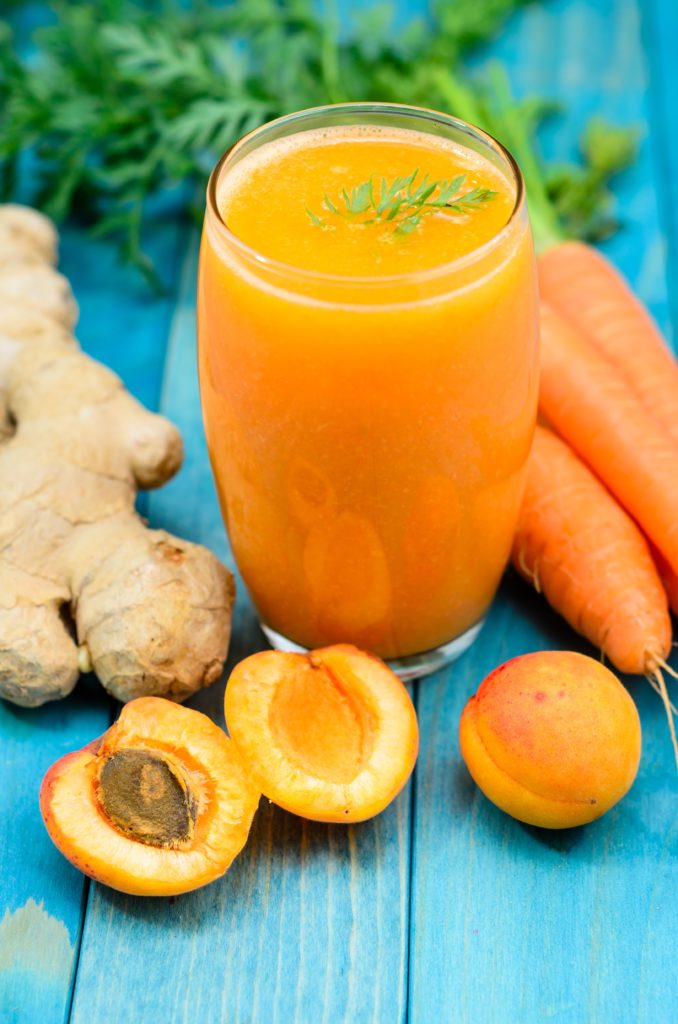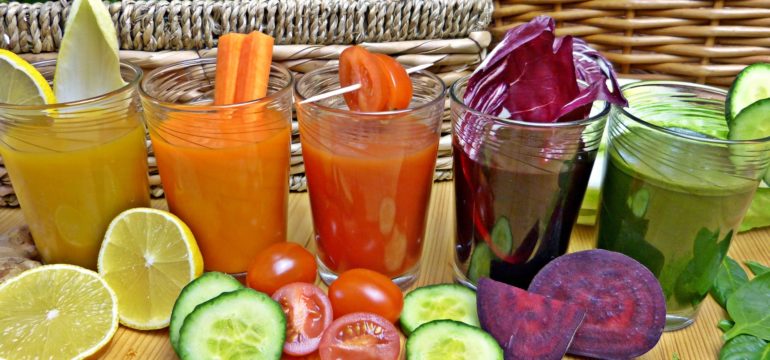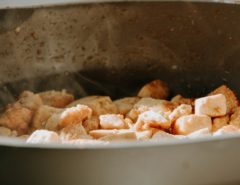By: Eileen Foerster
With all the latest diet trends on the market, it’s hard to know if we should be giving the keto diet a try or going on a week-long juice cleanse.
The short answer to all these questions usually boils down to: if this diet can’t be implemented as a permanent lifestyle change that’s enjoyable, then it’s probably not worth it to jump from trend to trend.
However, I am personally a big fan of juices, especially the fresh ones they make in smoothie bars, but never would I think to replace an 8 oz. juice for an entire daily meal. And after ordering a few of these juice drinks they begin to add up, starting at $5 and working their way up to over $10 for a single bottle! At the end of last year I decided to order my own Hamilton Beach juicer and give my review as well as technical insight into the world of juicing.

Image by silviarita from Pixabay
Although juicing is trendier than eating whole vegetables, the health benefits of juicing don’t outweigh that of eating the whole foods themselves. However, after you juice fruits and vegetables, the liquid collected is filled with phytonutrients but stripped of fiber. Fiber, which is typically found in the skin of fruits and vegetables, helps us feel fuller longer. Fruits and vegetables should be consumed in large quantities, but it’s very easy to drink more than four servings of fruit in one sitting without feeling full.
For instance, one glass of orange juice may have four oranges worth of juice, but could you sit down and physically peel and chew 4 large oranges without getting full? The act of chewing, along with the added fiber content gives our body the satisfaction of feeling full. Drinking our fruits and vegetables doesn’t always satisfy us like eating a full meal.
In terms of the types of juicers on the market, the most popular juicer is a centrifugal juicer, which requires a large spinning blade to extract the juice and tosses the extra skin into a discard collector. This quickly collected liquid usually contains up to 30% solids, composed of seeds, stems, and other parts of the plant. This is the type of juicer I purchased, which actually creates a foam on the top, a result of a slightly lower quality juice. This juicer is also quite loud and without care can cause a mess in the kitchen due to the fast rotating blade and the intense pace of juice pouring out.
However, I recommend making juices in bulk with this method. It’s quite easy to slice up fruits and vegetables and throw them down the shoot, pressing them into juice within minutes! The clean-up process is probably the most timely portion, as you need to deep clean the blade, discard the vegetable scraps, and dismantle the juicer before letting it dry.
Another type of juicer is a masticating juicer, which essentially extracts the juice while the blade is at a lower shear rate in comparison to the centrifugal juicer. The benefits of using this type of juicer are increased juice yields, decreased oxidation, less separation and longer shelf-life in your fridge, and it can process nuts into nut “milk” as well! However, the price tends to be more than the centrifugal juicer, and it takes longer to extract the vegetables and clean the machine after.
There are more juicers on the market, but these two tend to be the most popular. The masticating juicer follows “cold-pressed” methodology, which is highlighted for increased quality and micronutrient benefits.

Photo by Toni Cuenca from Pexels
The key to getting a good juicer is to do your own research and read the reviews for each brand to weigh the pros and cons of utilizing their model. Also, if noise is a concern consider looking into the loudness before purchasing. Mine in particular is quite loud, where I wouldn’t want to use it early in the morning and risk waking up my roommate! Finally, consider how often you realistically think you are going to use it. I naively expected to use this machine every week, but honestly I use it about once a month and make about 4-6 juices per usage.
I also recommend getting creative with the fruits and vegetables you utilize. When I first got my juicer, I would go to my local farmer’s market and get an abundance of fresh produce to try different blends in my juicer when I got home. Although I’m not a big fan of beets or certain squashes by themselves, in juices they provide a lot of unique flavor blends! Also, fresh herbs and citrus add a lot to the juice blends. A little bit of ginger, fresh mint, or lemon can spice up a typical juice. My favorite combination recently is apple, cucumber, beet, and carrot (sometimes with a little bit of ginger thrown in there)! It also helps to get either mason jars or large strorage containers to keep your juice airtight and less likely to spoil in the fridge. I found the typical lifespan of a freshly made juice is about 1 week.
Juices are also being presold by many brands on the market, such as Naked or Suja.
So how can you tell if you are better off buying the juice or making your own? It usually comes down to a combination of frequency, nutrition, and preference. How often do you consume juice? Is it daily, weekly, or an annual occurrence? If it’s more frequent than once every month or so, it may be worth it to invest in a juicer for under $100. If you care about the nutrition involved with juicing, it’s also good to check the ingredient list to ensure fresh fruits and vegetables are the sole ingredients. If you keep buying juices that are more like sugary soda, then maybe making your own tart vegetable blends is better for your lifestyle.
Finally, I love being creative in the kitchen! If you’re like me, making your own juice blends is a way to experiment and explore different flavor blends. If you only like particular juice blends, making it yourself allows for the extra flexibility and increased combinations.
Overall, juicing allows for an extra boost of micronutrients and a change from your usual morning coffee or water. Juicing isn’t by any means a necessity in the diet, but if you’re a foodie interested in learning more, then juicing could be the newest addition to your cooking repertoire!

Photo by Alexander Mils from Pexels

Eileen Foerster | Linkedin
SMF Blog Writer
Eileen is an undergraduate at the University of Illinois in Urbana-Champaign, with an interest in food product development. She is the recipient of the Moroz Learning Assistantship for the 2019-2020 school year, and is currently developing a food product in the pilot plant with the end goal of being implemented in her school’s dining services. Outside of the classroom, she can most likely be seen leading the Association of Food Technologists Club, at a group workout class, or baking away the stress of a busy school week. She also likes to explore new coffee shops around the area, and loves going to farmer’s markets during the warmer months.






Perfect timing that I found out this post. I was wondering if I should go for a ketogenic or juice cleanse. I want to lose some weight. Which one would be more effective. A few days ago I wanted to buy a juicer. But there are so many juicers out there so I was gathering more information on things. Thank you very much for writing this post. very helpful.